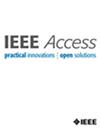Evaluating the Effects of Cyberattacks in Mixed and Fully Connected Vehicle Environments Using a Novel Microscopic Traffic Model
IF 3.4
3区 计算机科学
Q2 COMPUTER SCIENCE, INFORMATION SYSTEMS
引用次数: 0
Abstract
Cybersecurity has increased in importance due to advances in connected vehicle technology. To evaluate the impact of cyberattacks in mixed and fully connected vehicle environments, a novel microscopic traffic model is given that incorporates the connected autonomous vehicle (CAV) penetration rate. The intelligent driver (ID) model assumes uniform driver behavior based on a constant which is unsuitable for this environment. Thus, a variable exponent based on the cyberattack intensity is proposed that integrates the CAV penetration rate. The proposed model is evaluated over a 1000 m circular road for 500 s with a platoon of 28 vehicles with 60% of vehicles affected by an attack. The results obtained indicate that cyberattacks reduce traffic stability, particularly at low CAV penetration rates. At high penetration rates, these attacks have less of an impact due to faster reaction times and coordination of unaffected CAVs. Furthermore, the results demonstrate that the proposed model can effectively characterize traffic behavior under cyberattacks, and so can be used to alleviate congestion in the presence of cybersecurity threats.基于一种新的微观交通模型评估混合和全连接车辆环境下网络攻击的影响
由于互联汽车技术的进步,网络安全变得越来越重要。为了评估网络攻击在混合和全联网车辆环境中的影响,提出了一种新的微观交通模型,该模型包含了联网自动驾驶汽车(CAV)的渗透率。智能驾驶员(ID)模型假设驾驶员的行为基于一个常数,而这个常数并不适合这种环境。因此,提出了一个基于网络攻击强度的可变指数,该指数集成了CAV渗透率。所提出的模型在1000米的环形道路上进行了500秒的评估,其中28辆车排成一排,60%的车辆受到攻击。所获得的结果表明,网络攻击会降低流量稳定性,特别是在低CAV渗透率时。在高渗透速率下,由于未受影响的cav更快的反应时间和协调,这些攻击的影响较小。此外,结果表明,所提出的模型可以有效地表征网络攻击下的流量行为,因此可以用于缓解存在网络安全威胁的拥塞。
本文章由计算机程序翻译,如有差异,请以英文原文为准。
求助全文
约1分钟内获得全文
求助全文
来源期刊

IEEE Access
COMPUTER SCIENCE, INFORMATION SYSTEMSENGIN-ENGINEERING, ELECTRICAL & ELECTRONIC
CiteScore
9.80
自引率
7.70%
发文量
6673
审稿时长
6 weeks
期刊介绍:
IEEE Access® is a multidisciplinary, open access (OA), applications-oriented, all-electronic archival journal that continuously presents the results of original research or development across all of IEEE''s fields of interest.
IEEE Access will publish articles that are of high interest to readers, original, technically correct, and clearly presented. Supported by author publication charges (APC), its hallmarks are a rapid peer review and publication process with open access to all readers. Unlike IEEE''s traditional Transactions or Journals, reviews are "binary", in that reviewers will either Accept or Reject an article in the form it is submitted in order to achieve rapid turnaround. Especially encouraged are submissions on:
Multidisciplinary topics, or applications-oriented articles and negative results that do not fit within the scope of IEEE''s traditional journals.
Practical articles discussing new experiments or measurement techniques, interesting solutions to engineering.
Development of new or improved fabrication or manufacturing techniques.
Reviews or survey articles of new or evolving fields oriented to assist others in understanding the new area.
 求助内容:
求助内容: 应助结果提醒方式:
应助结果提醒方式:


